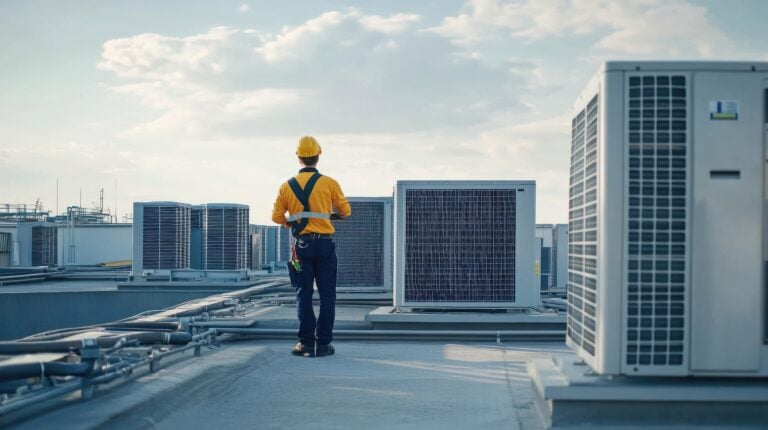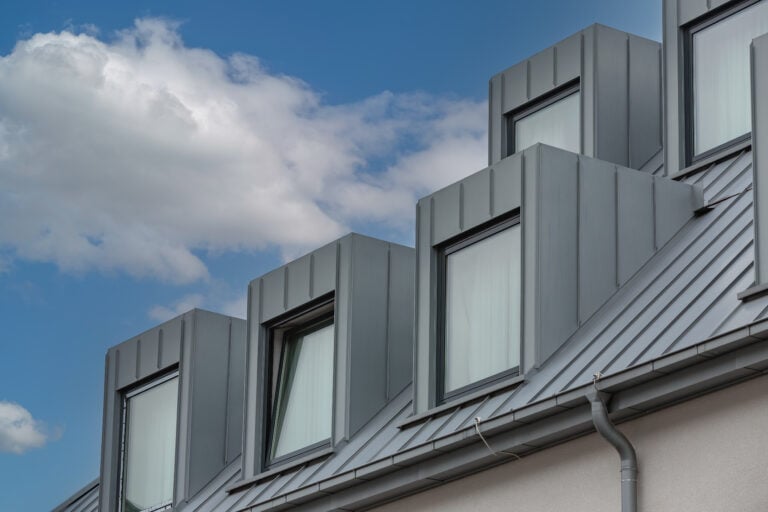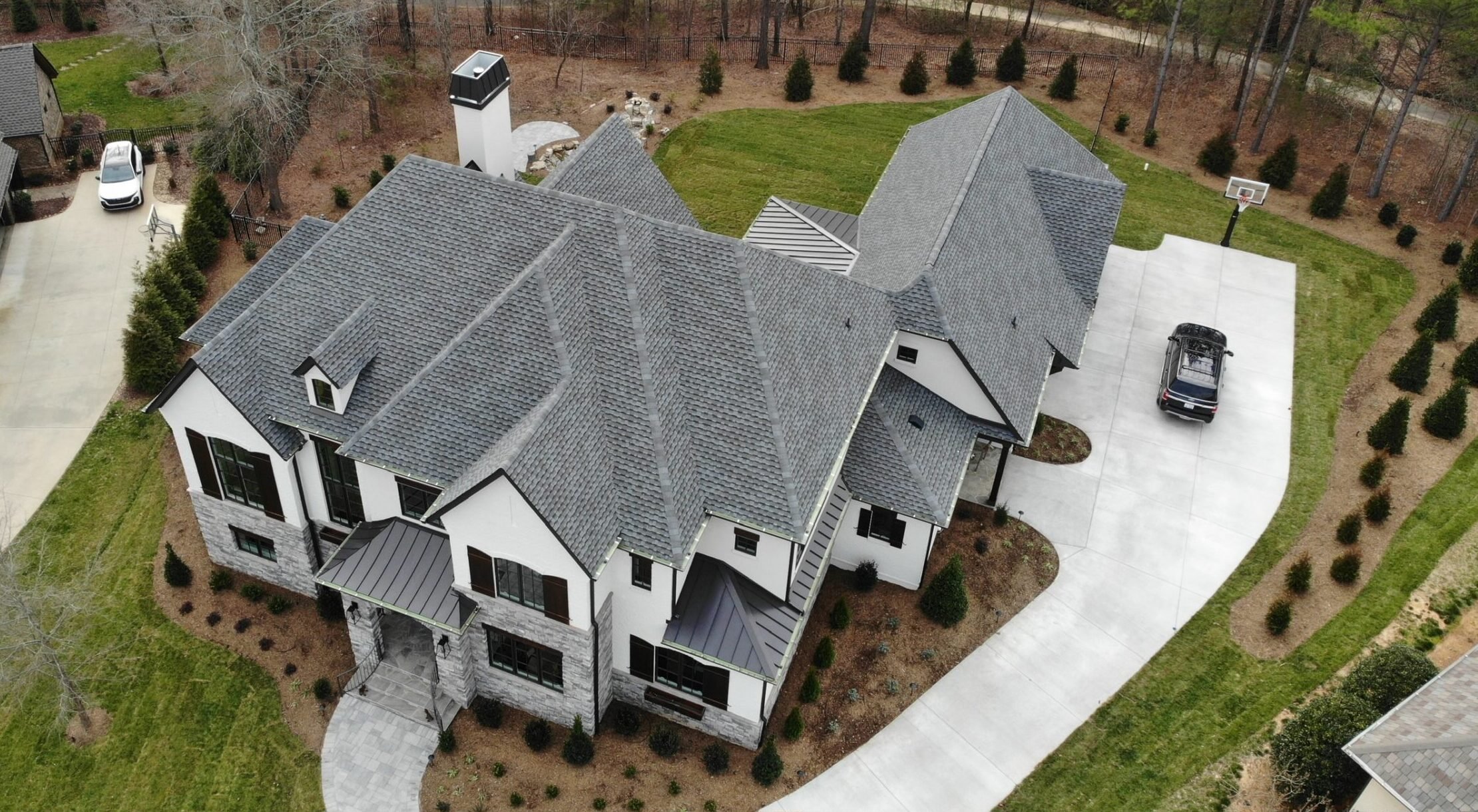What Are Roof Eaves? (Homeowner’s Guide to Roof Parts)
Posted 9.11.25 | 7 Minute Read
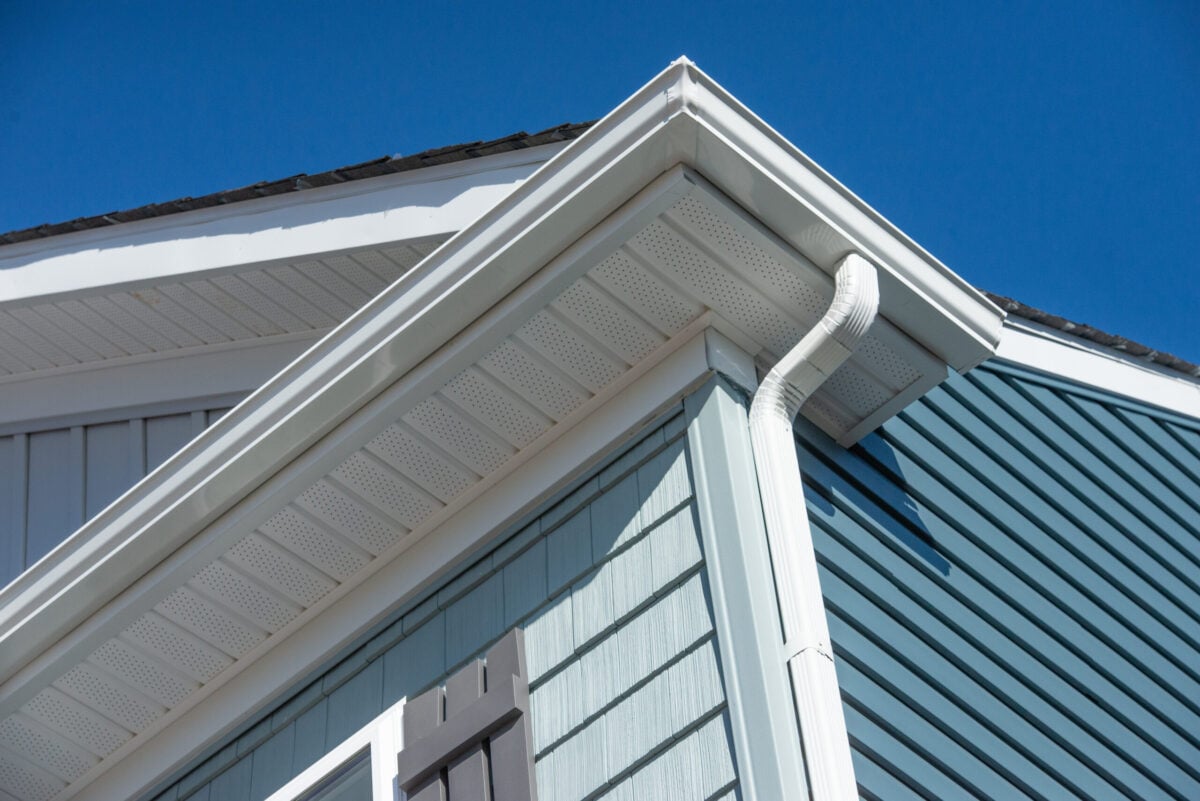
When you look up at your home’s roofline, you’re seeing more than just shingles and gutters. Every component of your roofing system serves a specific purpose in protecting your home from the elements. One of the most important yet often overlooked features is the roof eaves.
Understanding your roof’s anatomy helps you make informed decisions about maintenance, repairs, and upgrades. The eaves play a crucial role in your home’s overall protection and aesthetic appeal.
This comprehensive guide will cover:
- What roof eaves are and their key components
- Why eaves matter for your home’s protection
- The different types of eaves and their benefits
- Common eaves problems and maintenance tips
- How to choose the right eaves for your home
🏠 Why Roof Eaves Are Important
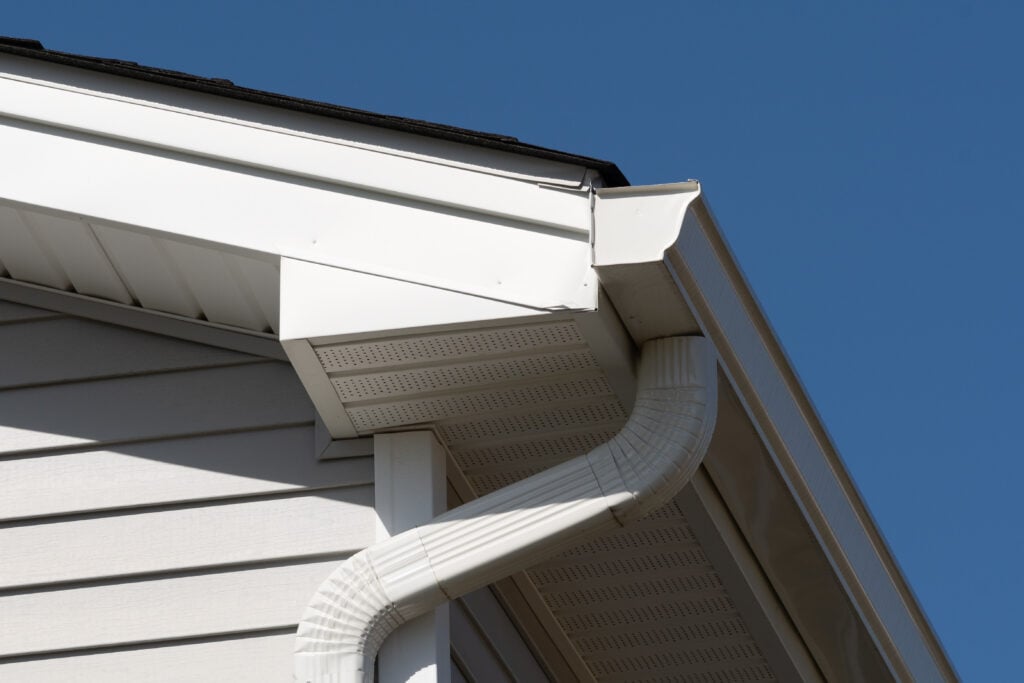
Roof eaves serve as your home’s first line of defense against weather damage. They’re far more than decorative elements—they’re engineered components that protect your property investment.
Properly functioning eaves provide several critical benefits:
- Water management: Direct rainwater away from your foundation and exterior walls
- Structural protection: Shield the roof deck and framing from moisture damage
- Energy efficiency: Help regulate attic temperature and reduce cooling costs
- Pest prevention: Limit access points for insects, birds, and small animals
- Aesthetic appeal: Create clean, finished rooflines that enhance curb appeal
- Ventilation support: Work with soffit vents to promote healthy air circulation
✅ 5 Essential Components of Roof Eaves
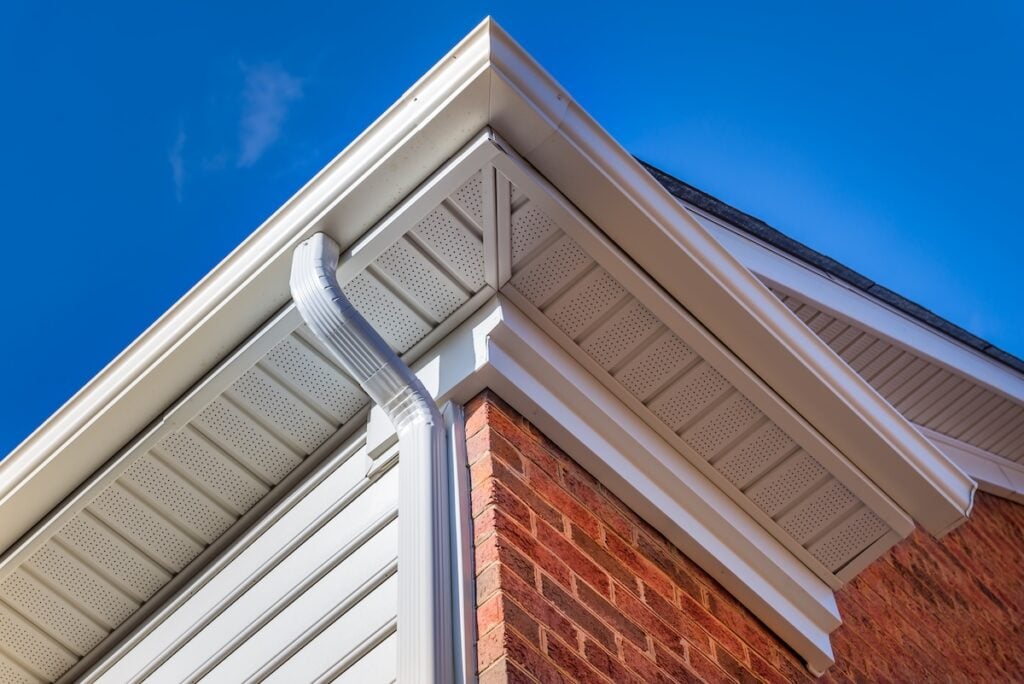
Understanding the anatomy of roof eaves helps you communicate effectively with roofing professionals. Each component works together to create an effective protection system.
1. The Eave Edge
The eave edge forms the horizontal border where your roof meets the exterior wall, and it plays a critical role in the structural integrity and overall effectiveness of your roofing system. This area requires careful attention to prevent water infiltration, which can lead to leaks, rot, and significant damage to both the roof and the walls of your home.
- Install drip edge flashing: Drip edge flashing is a metal strip designed to direct water away from the roof and into the gutters. Without a drip edge, water can seep into the roof decking or behind the fascia, causing long-term damage. Proper installation ensures rainwater flows smoothly into the gutter system, minimizing the risk of water pooling.
- Ensure proper overhang distance: The overhang should typically extend 12-24 inches beyond the wall to provide adequate protection. This overhang helps shield your home’s exterior walls and foundation from rain and snow runoff, reducing the risk of water-related damage to the structure.
2. Fascia Boards
Fascia boards run horizontally along the eave edge, serving as both a functional and aesthetic component of your roof. These boards often measure 1×6 or 1×8 inches and are usually made of wood, aluminum, or PVC. They provide structural support for the roof and a finished look to the eave area.
- Support gutter systems: Fascia boards act as the mounting surface for gutters, ensuring they stay securely attached and remain properly aligned to channel water away from your home. Without sturdy fascia boards, gutters could sag, detach, or fail to perform effectively.
- Protect roof rafters: By covering the ends of the roof rafters, fascia boards shield them from weather exposure, such as rain, snow, and UV damage. They also help prevent pests, such as birds or rodents, from accessing the attic or roof structure. Regular maintenance, such as painting or sealing, extends their lifespan and keeps them looking polished.
3. Soffit Panels
Soffits are the horizontal surfaces beneath the eave overhang, and they serve both functional and decorative purposes. By bridging the gap between the fascia and the wall, soffit panels contribute to the overall appearance of the eave area while also playing a role in ventilation.
- Provide ventilation: Properly vented soffits allow air to circulate into the attic, helping to regulate temperature and moisture levels. Adequate ventilation reduces the risk of problems like mold growth, rotting materials, and ice dams in colder climates. For optimal performance, soffits can be equipped with small vents that allow air to flow freely while keeping out debris and pests.
- Create a clean, finished look: Soffit panels conceal exposed rafters and structural elements, giving your roofline a neat and polished appearance. They are available in various materials, including aluminum, vinyl, and wood, so you can choose an option that complements your home’s style.
4. Rafter Tails
Rafter tails are the exposed ends of the roof’s structural rafters, extending beyond the walls to support the eave overhang. Depending on the architectural style of the home, rafter tails may either be concealed with fascia and soffit panels or left exposed as a decorative feature.
- Support the eave structure: Rafter tails bear the weight of the roof overhang, helping to distribute the roof load evenly. This structural support is essential for maintaining the stability and durability of the eave area.
- Require proper sealing and maintenance: When rafter tails are left exposed, they must be sealed and maintained to prevent rot, warping, or insect damage. Regular inspection and treatment can extend their lifespan and preserve their appearance, especially in homes with a traditional or rustic design.
5. Eave Flashing
Eave flashing is a critical component of a watertight roofing system. These materials are installed to create seals where the roof meets vertical surfaces, preventing water from seeping into vulnerable areas. Proper flashing installation is essential to avoid costly repairs caused by water damage.
- Install along the eave edge: Flashing is typically placed at the eave edge to guide water away from the roof decking and into the gutters. This prevents water from pooling near the edge, which could lead to leaks, rot, or ice dams.
- Use high-quality materials: Eave flashing is available in materials such as aluminum, galvanized steel, and copper. Choosing durable, high-quality materials ensures the flashing lasts for many years without rusting or deteriorating. Proper installation and regular inspection are essential for maintaining its effectiveness over time.
🔧 Types of Eaves and Design Considerations
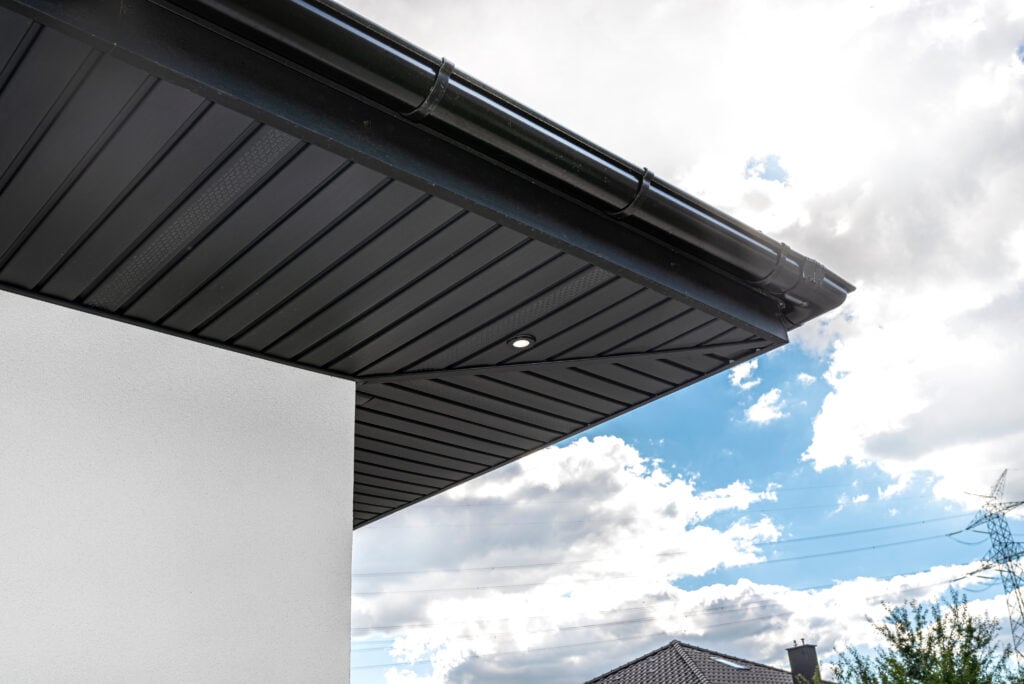
Different eave styles offer varying levels of protection and aesthetic appeal. Your choice depends on your home’s architecture, local climate, and personal preferences.
Open Eaves vs. Closed Eaves
Open eaves expose the rafter tails and roof decking, creating a rustic, craftsman-style appearance. This design requires more maintenance but offers easy access for repairs.
Closed eaves: Feature soffits that conceal structural elements, providing better protection and requiring less maintenance.
Boxed Eaves and Flush Eaves
Boxed eaves extend beyond the exterior wall with horizontal soffits, offering maximum weather protection. Flush eaves sit close to the wall with minimal overhang, creating a modern, streamlined look.
Material Options for Eaves
Choose from various materials based on durability, maintenance requirements, and aesthetic preferences:
- Aluminum: Lightweight, rust-resistant, and available in multiple colors
- Vinyl: Low-maintenance option with good durability and affordability
- Wood: Natural appearance but requires regular maintenance and treatment
- Fiber cement: Durable, fire-resistant option that mimics wood appearance
🔄 Ready to Protect Your Home’s Roof System?
Your roof eaves work tirelessly to protect your home from water damage, pests, and energy loss. Regular maintenance and proper installation ensure these critical components continue performing effectively for years to come.
Understanding your eaves helps you spot potential problems early and communicate clearly with roofing professionals. From proper ventilation to structural support, every component matters in maintaining your home’s protection.
Don’t wait for problems to develop—take proactive steps to maintain your roof system today. Contact Great State Roofing for a comprehensive roof inspection and expert advice on keeping your eaves in optimal condition. Our experienced team will ensure every component of your roof works together to protect your most valuable investment.
